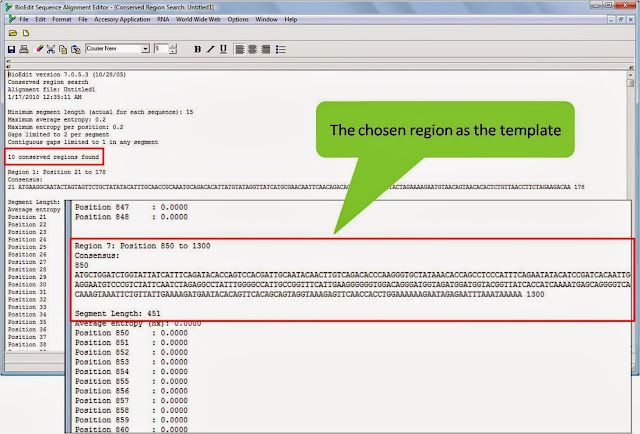

With BioEdit you will access to a variety of useful tools:
PRIMERS IN BIOEDIT SOFTWARE
This free software is intended to supply a single program that can handle most simple sequence and alignment editing and manipulation functions that researchers are likely to do on a daily basis, as well as a few basic sequences analyses.

Les auteurs ont ensuite extrait et amplifié l’ADNe de moules à partir d’échantillons d’eau provenant de bassins de reproduction. Six des marqueurs ont permis d’amplifier uniquement l’ADN de l’espèce visée. Les auteurs ont développé 32 marqueurs COI pour huit espèces d’unionidés et ils ont testé chacun de ceux-ci sur les espèces ciblées ainsi que sur 29 autres espèces d’unionidés potentiellement sympatriques. Les auteurs ont examiné s’il y avait suffisamment de variation au sein de la région codant pour la cytochrome oxydase (COI) pour développer des marqueurs spécifiques des espèces d’unioinidés menacées. Plusieurs de celles-ci sont potentiellement sympatriques, et 14 espèces ont été formellement classifiées comme étant en danger, menacées d’extinction ou d’intérêt particulier. Il existe 41 espèces indigènes de moules d’eau douce (Unionidae) en Ontario, au Canada. Bien que l’analyse de l’ADNe ait été employée pour détecter l’ADN d’une diversité de groupes taxonomiques, elle n’a pas encore été utilisée pour identifier l’ADN d’espèces appartenant à la même famille et potentiellement sympatriques, un contexte qui pourrait rendre impossible le développement de marqueurs spécifiques d’une espèce. L’ADN environnemental (ADNe) apparait comme un outil potentiellement puissant pour inférer la présence d’une espèce, et donc son occupation, à partir de l’ADN qui est libéré dans l’environnement et qui peut être détecté au sein d’échantillons comme de l’eau. We conclude that despite high species diversity, it should be possible to develop eDNA COI markers and screen water samples for habitat occupancy by unionid mussels. We then extracted and amplified mussel eDNA from rearing-tank water samples. Six of these markers amplified DNA only from the intended target species.
PRIMERS IN BIOEDIT PLUS
We developed 32 COI markers for eight unionid species, and tested each of these on the target species plus 29 potentially sympatric unionid taxa. We investigated whether there was sufficient variation within the cytochrome oxidase region (COI) to develop species-specific eDNA markers for at-risk unionids.

Many of these are potentially sympatric, and 14 species have been formally assessed as endangered, threatened, or special concern. There are 41 native freshwater mussel species (Unionidae) in Ontario, Canada. Although eDNA screening has been used to detect DNA from a variety of taxonomic groups, it has not yet been used to identify DNA from species with numerous potentially sympatric confamilial species, a situation that may preclude the development of species-specific markers. Environmental DNA (eDNA) is emerging as a potentially powerful tool for inferring species’ presence, and hence occupancy, from DNA that is shed into environmental samples such as water.


 0 kommentar(er)
0 kommentar(er)
